The Best Car Chargers to Keep Your Devices Charged on the Go
These days, we’re always on the go and living in a connected world. That means we constantly need to have our smartphone charged and on the ready. Nothing is worse than dealing with the anxiety you get when you realize your phone’s battery has just a few minutes of life left.
The good news is, there are literally dozens of car chargers available for USB devices. Most of these are extremely easy solutions, using your cigarette lighter receptacle for power. From there, you just connect the USB cable you need to your device and get a charge while on the road or sitting in traffic. In addition, if you’re a rideshare driver, you’ll want to invest in one of these to keep your passengers happy. Nothing gets you a 5-star rating quicker than having a car charger ready to go so your passengers can charge their phones while riding with you.
Most car chargers are inexpensive, but they do boast different features depending on the charge your device supports. For example, if your device supports quick charging, then you’ll want a charger that offers quick charging. Here are our picks for the top 10 best car chargers to keep your phone and other devices topped off so you’re never left with an empty battery.
Updated 09/10/2020 with new product recommendations.
Table of contents
- 1. Editor's Pick Anker 24W Dual USB Car Charger
- 2. ESR HaloLock Wireless iPhone Charger
- 3. AI AIKENUO Six-Port Car Charger
- 4. AINOPE Compact Car Charger
- 5. AmazonBasics USB-C Car Charger
- 6. Nekteck USB Type C Car Charger
- 7. Anker 24W Car Charger 2-Port 4.8A Ultra-Compact PowerDrive 2 Elite
- Everything You Need to Know About Car Chargers
- What should I look for in a good car charger?
- Amp Output
- USB Port
- Charger Cable
- Can car chargers damage my phone batteries?
- How to use a car charger the right way
- Why is my car charger so slow?
- What should I do if my car charger isn't working?
1. Editor's Pick Anker 24W Dual USB Car Charger
Anker is one of the leading brands when it comes to manufacturing chargers, so it should come as no surprise that their 24W Dual USB charger is one of the highest quality car chargers available on the market. It features an Advanced Charging Technology with PowerIQ and Voltage Boost that provides one of the fastest charging. It can easily charge up to 4.8 amperes per port and there are two ports.
The dual port allows you to charge multiple devices at the same time. In addition to that, it embraces a certified Multi protect safety system that ensures complete protection for you while charging. Thus, no need to fear any surges, shorts, etc.
The USB charger is small in size and features an LED light that blinks for you to know where to put the cord in. It is available in two colors: black and white. This charger is compatible with a host of different devices including the Apple, MacBook, tablets, and Android smartphones, as well as various other USB-chargeable devices. It can easily recharge a MacBook in 5 hours.
Pros | High-quality circuit components, fast charging, durable and compact, protects from electrical damage, dual port |
Cons | Tends to slip out of the cigarette lighter a bit, not compatible with some vehicles |
2. ESR HaloLock Wireless iPhone Charger
The ESR HaloLock is a wireless charging station for iPhone 12,13, and 14 models. Although it’s something of a misnomer to call the charger wireless, it still needs to be connected to a USB port for power. There is no internal battery or other power supply. It would be more accurate to say that the ESR HaloLock is a wired charger that charges phones wirelessly.
Semantics aside, we think the HaloLock has a few neat features that make it worth considering if you have a compatible phone. The charger clips into your dashboard vents and doubles as a phone holder; your phone sticks to its internal magnet with 1,4000 grams (just over 3.0 pounds) of force. A ball joint gives the charger a wide range of motion so you can position your phone to your liking.
While we think the LED halo light effect is gimmicky, the integral cooling fan is not. Inductive charging can cause your phone to heat up; plus, the sun pounding through your car’s windshield creates an environment that can lead to phone overheating. A hot phone will shut itself down or limit functionality until its temperature returns to a safe level. At best, this is a nuisance; at worst, it can damage your phone’s battery. The automatic cooling fan can help mitigate these problems.
The HaloLock is significantly more expensive than other car chargers on this list, but it’s also much more complex, so the price is understandable. A few users found the magnet wasn’t strong enough to hold their phones in place, especially if it was in a thick, protective case. There were some reports of chargers cracking after a few months and of fragile clips. However, out of fourteen thousand reviews on Amazon, 84% are positive.
Pros | Integral cooling fan, multi-adjustable, wireless charging |
Cons | Only for certain iPhone models, there are cheaper ways to charge your phone |
3. AI AIKENUO Six-Port Car Charger
Your vehicle doesn't have enough charging ports? Add six; the AI AIKENUO sports four QC 3.0 charging ports and two 5V, 2.4A charging ports.
QC 3.0 technology can charge a smartphone's battery by 50% in as little as half an hour. Green and orange backlighting make power ports easier to find in nighttime conditions. The charger plugs into your car's cigarette lighter or power receptacle via a 3.28-foot power cord.
While it might seem retrograde, the AI AIKENUO features a traditional glass fuse in the power plug to protect against fire. We like this, as such fuses are still readily available and easily replaced.
Earlier versions of this charger defaulted to power-off mode and had to be manually switched on after vehicle restart. Users complained because they expected their charging ports to be powered up as soon as they started their cars. However, the manufacturer reacted to complaints, and current production chargers default to power-on mode. Other buyers noted that their chargers ran a little warm or simply failed to work or stopped working after a short time.
The AI AIKENUO six-port charger still scores well in the customer satisfaction department with 90% positive reviews.
Pros | Six charging ports, QC 3.0 capable |
Cons | Short 3.28-foot power cord, may get warm in operation |
4. AINOPE Compact Car Charger
If you prefer something extremely compact, this all-metal car charger from AINOPE fits the bill. Available in black, red, or silver if you wish to match your other interior accessories, this recommendation is a dual USB device charger offering 2.4A in each port. Unfortunately it doesn’t support Qualcomm Quick Charge, but it will still charge faster than standard 1A and 2.1A chargers.
Inside the charger are LED lights, making it easier to plug in your devices in the dark. The exterior body is constructed from zinc alloy, making it extremely scratch resistant and durable. Safety features on this charger include over-current, overcharging, overheating, and high temperature protection.
Pros | Dual USB ports, compact, metal body, 2.4A for each port, integrated LED lights, plenty of safety features |
Cons | No Qualcomm Quick Charge support, some quality issues |
5. AmazonBasics USB-C Car Charger
If you have a USB Type-C device and want a seamless charger, consider this option from AmazonBasics. This charger is available with an included cable for quick and seamless integration, or you can save a few bucks and get an option without a cable. It also has a built-in USB-A port for other devices for more versatility. The Type-C port is rated at 18W, while the USB-A port is rated at 12W.
This charger is able to deliver an 80-percent charge in just 35 minutes (for USB Type-C devices), helping you quickly get your phone’s battery to a better state during your commute. It also features an automatic stop function that will detect overcharging or lower/over voltage. Other safety features that round off this recommendation are vibration absorption for a continuous transfer and fireproof construction.
Pros | USB Type-C compatibility, includes USB-A port for other devices, quick charging |
Cons | Average charging speed for USB-A devices, included cable cannot be removed from charger |
6. Nekteck USB Type C Car Charger
The NekTeck USB Car Charger features a superior USB 3.1 C cable with an innovative C type connector that is fully reversible. No more fumbling around trying to get the cable in your phone.
The premium attached USB C 3.1 cable features a next-generation Type-C connector with a new design that is fully reversible. This allows you to plug in without fail, regardless of how you are holding and inserting the cable. Thus, you can concentrate more on driving and less on trying to get your phone charged.
Another great add-on is a USB A port to help you charge those non-USB-C devices at a faster speed at 5.4A. The Smart Sense IC technology helps each port identify the device inserted accurately and then to maximize the charging speed. The charger is fully compatible with tablets and smartphones of all kinds. The charger is constructed our of fireproof materials and includes an anti-oxidation aluminum pull tab.
Pros | Dual ports, fast charging using IC technology, reversible type C connector, constructed from a fireproof material, compatible with USB-C and USB-A devices |
Cons | USB-A port does not feature Quick Charge |
7. Anker 24W Car Charger 2-Port 4.8A Ultra-Compact PowerDrive 2 Elite
Another valuable asset in the PowerDrive series is the Anker 24W Car Charger power drive 2 Elite. It is a dual port car charger and delivers 4.8 Amperes of current combined. It combines one of its most innovative technologies into one unit.
The PowerIQ Technology intelligently identifies what type of device is plugged in and then delivers the optimum amount of current tot hem to help them charge faster. The other technology is the Voltage Boost, which determines when the charger has any resistance due to the cable. It then compensates for these resistances by increasing the voltage and thus ensures steady charging of all devices.
Also included is a soft LED light that helps you find the charger in the dark when it is plugged in. The super compact design allows you to use it without any hindrances to the driver. It also comes with an 18-month warranty.
Pros | Includes PowerIQ and Voltage Boost technology, optimizes the charging power for each device, dual port, carbon mesh fiber for durability, 18 months warranty, LED light, compact build, includes a combination of 10 safety features |
Cons | Not compatible with iPod Classic, iPod Nano, and HP Touchpad |
Everything You Need to Know About Car Chargers
Are you planning on taking a long road trip with your family or friends? You’re probably going to be busy packing all your snacks and essentials. But many individuals tend to overlook one significant thing they need to take along with them: USB car chargers.
If you’re a frequent traveler or someone who relies on their phone, you know the struggle of having your battery run out and the anxiety you get when it’s running low, so having a USB car charger is pretty much a necessity these days.
USB car chargers are small devices that can be plugged into your car’s cigarette lighter space or power access port and comes with single or multiple USB ports. They are generally used to charge phones, tablets, battery packs, cameras, and numerous other USB devices.
What should I look for in a good car charger?
All car chargers are very unique based on their design, brand, style, number of ports, power supply, and various other features. You should be able to choose the right one for your charging needs by focusing on these key aspects:
Amp Output
Most smartphones require an amp output of around 1.0 Amps. The ideal car chargers should offer you a minimum of 2.1 Amps with each USB port. The reason for this specific supply is so that you have the ability to charge your Android gadgets and Apple products at their optimal speed.
If you want a dual USB car charger that promises the best performance, then you should keep an eye out for USB car chargers providing 4.8 Amps of output. That means that you get an output of 2.4 Amps per USB port, which is more than adequate to charge two Android tablets or Apple iPads at the same time.
That said, if a car charger’s Amp output in each USB port is under 2.1 Amps, then these car charges are not advised to charge tablets or iPads. They can, however, still be perfectly sufficient in charging smartphones.
USB Port
If you’re someone who owns multiple gadgets, phones, and computers, owning car chargers with just a single port isn’t enough. You can avoid the inconvenience and time wasted altogether by choosing USB car chargers with multiple ports, which will allow you to charge your gadgets simultaneously.
You don’t need to worry about your phone dying on you while you’re charging your laptop. Furthermore, if you’re traveling with colleagues or other passengers, having a car charger with multiple ports will allow them to get in on the charging as well, something we can all appreciate.
Charger Cable
I think we’re all well aware of the fact that charging cables don’t last as long as we want them to. An ideal car charger would never come with a permanently fixed cable since it won’t allow any flexibility and will only be an inconvenience when charging.
Car chargers with permanent cables (like the one pictured above) are problematic because cables take a lot of abuse, which is why they tend to break and fray. This is why you should always buy car chargers that don’t come with a fixed cable so that when the cable breaks, which is inevitable, you will only have to replace the cable and not the whole charger.
Can car chargers damage my phone batteries?
This isn’t a simple yes or no question. There is some truth to it, while other aspects are just myths. You should know that charging involves two components: (1) a consistent source of accurate voltage with the current controlled appropriately, and (2) a sensor that can tell when charging is complete.
In older vehicles, car power wasn’t really the most reliable source. Fluctuating voltage was often a problem with old cars. However, in more recent car models, their systems are more dependable and stable.
You can still expect surges, spikes, and fluctuations in situations where you’re starting your car. So, if you use your cigarette lighter car charger during these start-up moments, don’t be shocked if any spikes or surges come your way. It might be smarter to plug in your phone after you get the car running.
Still, the main question is, can these spikes damage your charging electronic devices? For the most part, no. No damage should happen to your gadgets, especially if the gadget and the car chargers are not cheaply made.
Still, you should avoid plugging in your car chargers and devices when before starting the car as a precaution. No need to worry though, as most well-designed chargers come with smart chips that can measure the input current and see whether the device or charger is fully charged and alter the voltage simultaneously to avoid overcharging and burnouts.
How to use a car charger the right way
The first thing you should focus on is avoiding any damage to your car battery. To make sure your car phone charger doesn’t drain the battery, you should unplug it from the power source if it isn’t being used.
Even if there isn’t anything plugged in or being charged, letting the car charger stay plugged in can drain the car battery or deplete the power even if the engine is powered off, so you’re left without a working car. Most newer cars won’t have this issue, but you have to be more careful with older cars that have weaker batteries.
There are some great car chargers that come with safeguards that are able to automatically cut off charging power when it is completed so that no unnecessary car drainage is taking place. You should make sure to see if your car charger has such safeguards before leaving them plugged in unnecessarily.
The second thing you should consider is evaluating the compatibility of your car charger across the different mobile devices that you may own. Does your gadget have a proprietary cable, for example?
Once your gadgets are completely charged or almost there, remove your car charger from the power source to avoid damage to your devices and to your car battery
Lastly, if you’re looking to get a quicker charge, you can charge faster by turning your devices off while they’re plugged in. Some devices take a long time to get to full charge since they’re constantly working in the background even if you aren’t using them.
Turning your devices off minimizes the time it takes to charge so that you can quickly have a working phone or laptop when needed. This is especially convenient for smartphones that are notorious for their slow charging speed.
Why is my car charger so slow?
This is surprising for a lot of people, but the slow charging of USB car chargers isn’t the fault of the chargers themselves. In fact, while your car’s USB ports can be convenient for a quick charge, they aren’t always able to provide enough power to charge your devices. Some barely have enough power to keep your devices running. If you have a stock USB port in your car that charges too slowly, buy an adapter for the cigarette lighter plug, which should be quicker, as they put out more power.
What should I do if my car charger isn't working?
In case your devices aren’t being charged, you should start by looking at the fuse to the outlet. Occasionally, car charges take in more power than their fuses can handle. In such a situation you’ll have to switch to a new car charger.
If the fuse seems to be working, make sure the car chargers are getting adequate contact with the power supply. If the car charger still doesn’t work after the cleaning, locate the fuse panel and find a fuse marked either CIG, LTR, or AUX PWR. Replacing the fuse should help fix the problem.
If none of these solutions works for you, then the problem may lie with your car charger. Some brands and products are of poor quality and design and can short out over the smallest surge or have a significantly shorter lifespan than other powerful car chargers. Don’t buy a dollar store car charger. They might be cheap, but you get what you pay for, and it probably won’t last very long.
Recent Updates
October 14, 2022: Moved former No. 2 item to No. 1 position. Removed: Maxboost, Aukey, Ainope, and Ravpower; added ESR wireless charger as No. 3 position and AI AIKENUO as No. 4 position.
We are committed to finding, researching, and recommending the best products. We earn commissions from purchases you make using the retail links in our product reviews. Learn more about how this works.
Photo credit: Casezy idea / Shutterstock.com
More by Avery Anderson



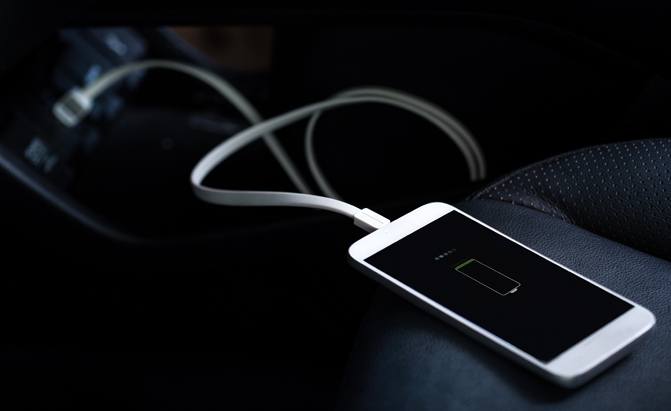
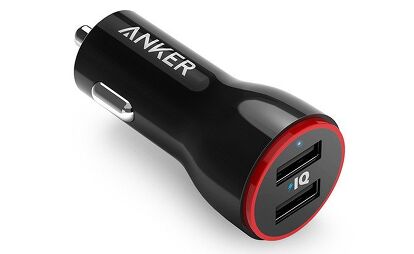
















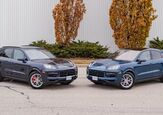
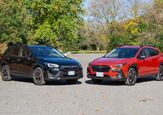
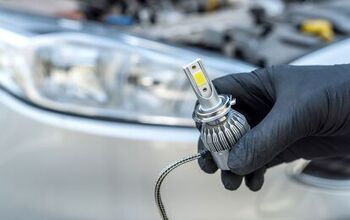

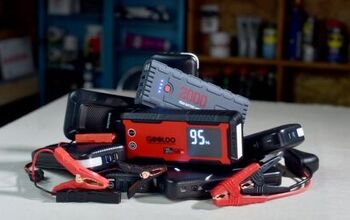
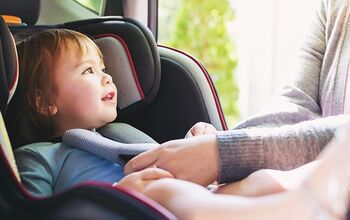














Comments
Join the conversation